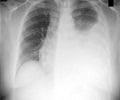World Tuberculosis Day, an annual event held on 24th March, is designed to raise public awareness on tuberculosis, which remains an epidemic, causing millions of deaths, mostly in the developing countries.
- World Tuberculosis Day aims to create awareness about the disease that affects millions of people each year
- The theme for 2018 World Tuberculosis Day is Wanted: Leaders for a TB-free World
- TB is the leading cause of death related to antimicrobial resistance and the major killer of people with HIV
Wanted: Leaders for a TB-free World
The theme for the World Tuberculosis (TB) Day encourages leaders not only at the political level with the Heads and Ministers, but at all levels from Mayors, Governors, parliamentarians, community leaders, doctors, nurses, health workers and also people with TB to join hands and take efforts to end TB.TB is deeply rooted in populations where human rights and dignity are limited. Tough TB can affect anyone, the disease thrives among people living in poverty and communities that are marginalized and other vulnerable populations. Some factors like malnutrition, poor sanitation, use of tobacco and alcohol and diabetes can affect vulnerability to TB and access to care.
What is Tuberculosis?
Tuberculosis an air-borne infection caused by bacteria called Mycobacterium tuberculosis (M.tuberculosis). TB can be transmitted from one person to another through the air.Latent TB is a condition in which a person is infected with the TB bacteria, but does not have an active TB disease and cannot spread TB to others. Nearly one-third of the world's population has latent TB.
People with a poor immune system, such as those living with HIV, malnutrition, and those who use tobacco have a higher risk of falling ill with TB. TB affects the lungs, causing a bad cough that lasts longer than two weeks. Some of the symptoms of TB include a chronic cough with blood, fatigue, fever, loss of appetite, malaise, night sweats, loss of muscle, unintentional weight loss, shortness of breath and swollen lymph nodes.
TB can be diagnosed with a chest x-ray, skin test, sputum microscopy, culture test and Genexpert test. TB can be treated, and most of the drugs for TB were developed many years ago. A combination of TB drugs should be taken at least for a period of six months. Some drugs have severe side effects, and there is an urgent need for new TB drugs to be developed. With the emergence of MDR-TB, many people are now resistant to one or more of the drugs. Drug susceptibility testing can help identify the drugs a person is resistant to.
The first key step to eliminate TB is prevention. The prevention of TB is to stop the transmission of TB-causing bacteria from one person to another. People affected with TB should receive effective treatment for the disease to prevent the transmission.
Facts About Tuberculosis
- TB is a communicable disease, but it can be treated and prevented
- TB is one of the top 10 causes of global deaths
- People with TB bacteria have a risk of falling ill with TB by 10%
- People with TB can infect up to 10-15 other people
- A person with HIV is more likely to develop TB by 26 to 31 times
- One of the targets of the Sustainable Development Goals for 2030 is to end TB epidemic
- A majority of the TB cases are in Asia (61%) and Africa (26%)
- Between the years 2000 and 2016, about 53 million lives were saved through TB diagnosis and treatment
Statistics About Tuberculosis
- In 2016, 10.4 million new TB cases were recorded, and 1.7 million people died from TB
- In 2016, one million children were infected with TB and 210,000 children died from the illness
- About 13 million people in the U.S. are estimated to have latent tuberculosis infection
- About 5-10% of people with latent TB infection will develop TB disease
- Nearly 490,000 TB affected people developed MDR-TB in 2016
- The success rates of TB treatment increased by 83% in 2015
- According to the WHO, 2.79 million cases of TB were reported in India in 2016
- World Tuberculosis Day - (http://www.who.int/campaigns/tb-day/2018/event/en/)
- 2018 World TB Day Theme Announced - (http://www.stoptb.org/news/stories/2017/ns17_082.asp)
- TB - (https://www.tbfacts.org/tb/)
- What is TB? How is it treated? - (http://www.who.int/features/qa/08/en/)
















